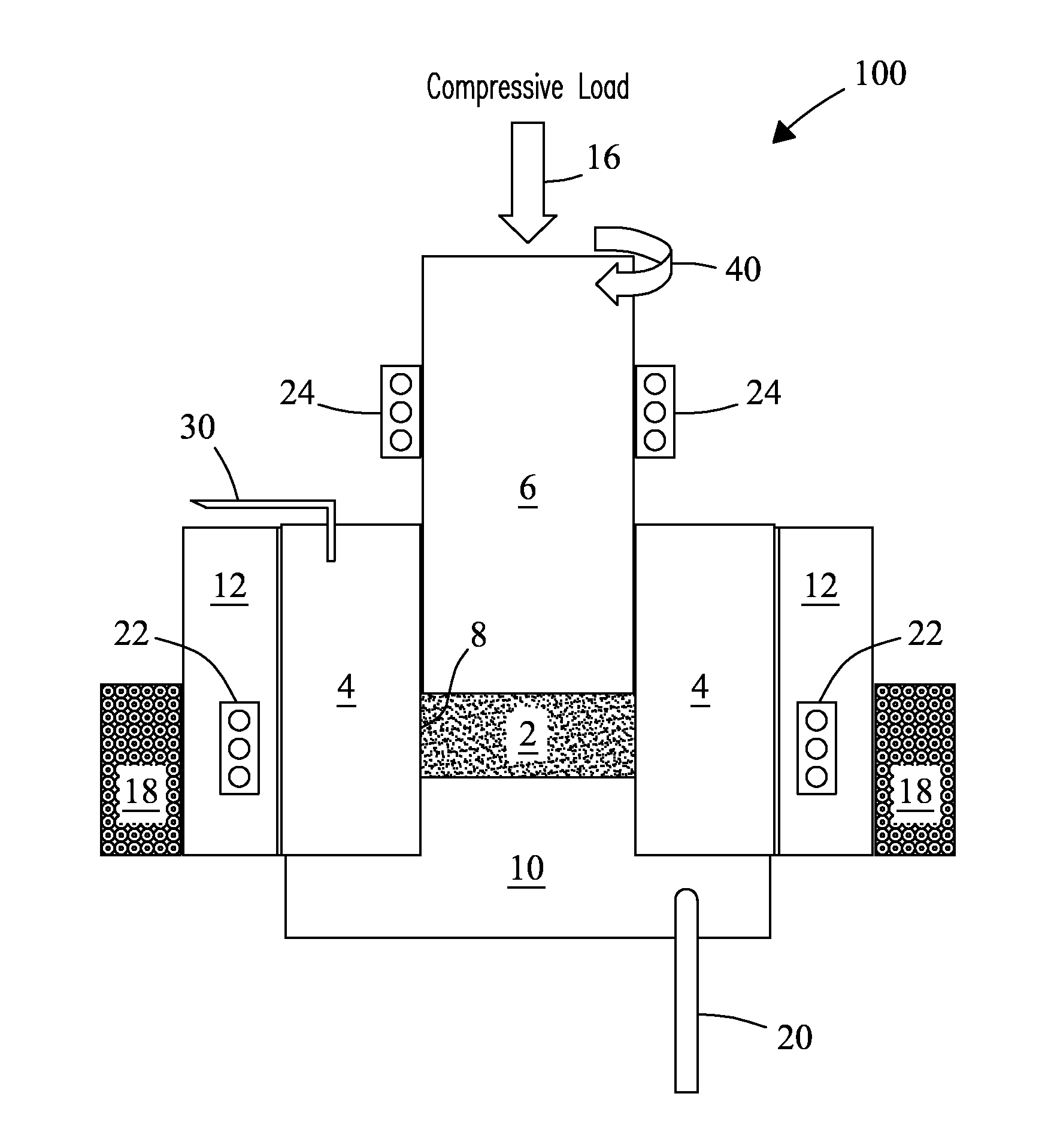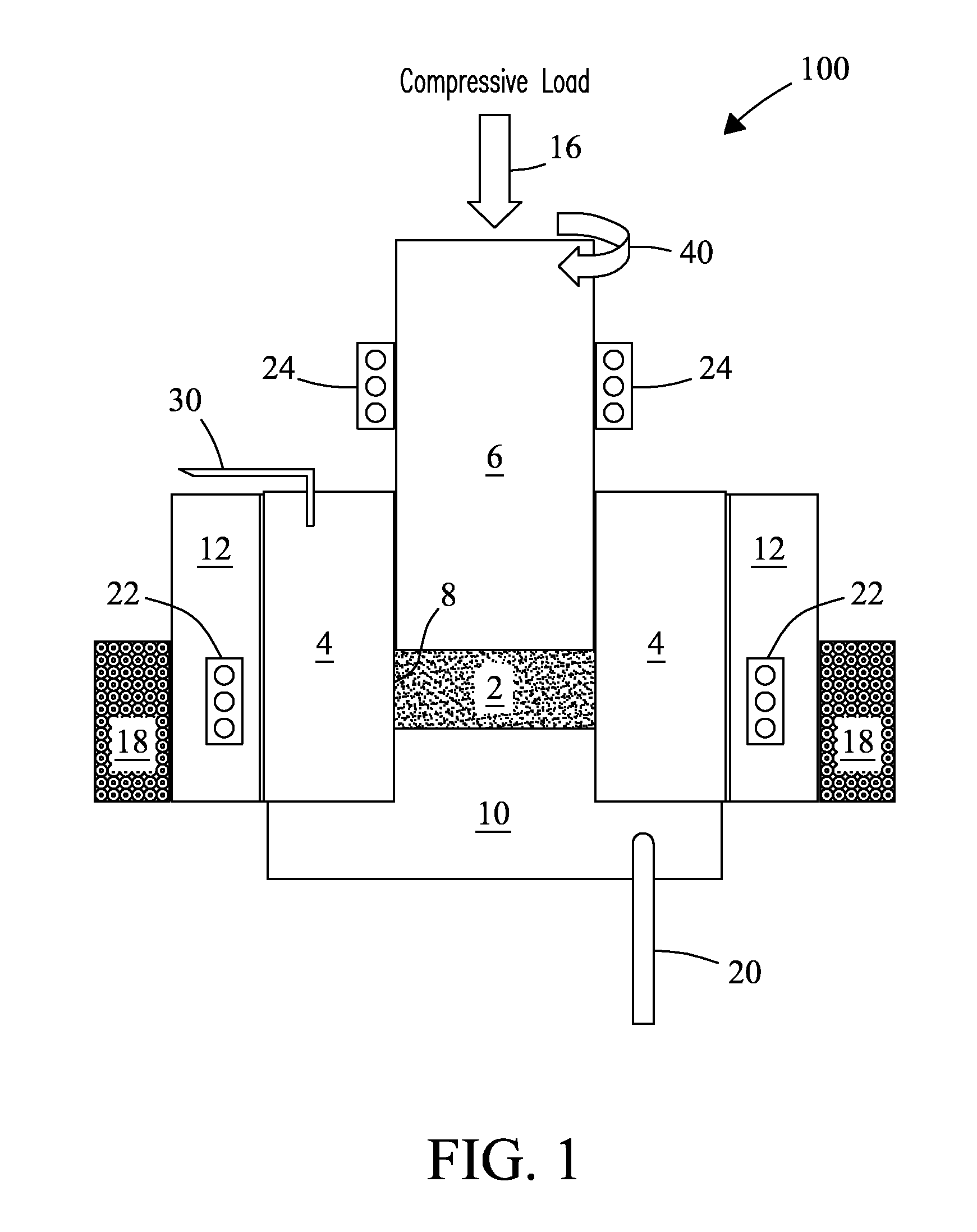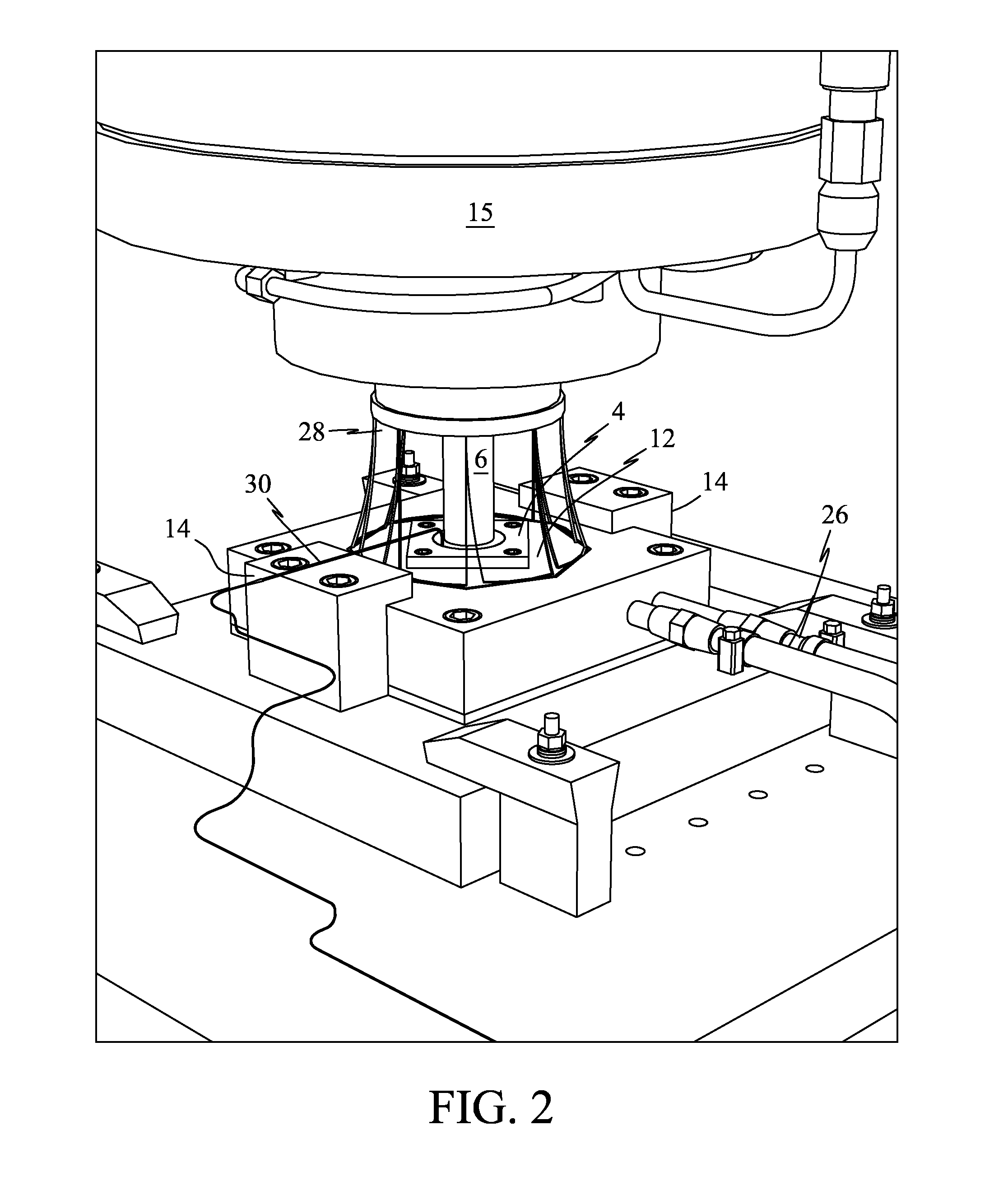System and process for friction consolidation fabrication of permanent magnets and other extrusion and non-extrusion structures
- Summary
- Abstract
- Description
- Claims
- Application Information
AI Technical Summary
Benefits of technology
Problems solved by technology
Method used
Image
Examples
example 1
Friction Consolidation and / or Extrusion as a Replacement to Conventional Sintering
[0090]Feedstock particles were obtained by crushing and grinding melt-spun ribbons of Nd12.8Fe63.8BDy5.9Y6.4CO8.1Ti1.6C0.4. The die tool of FIG. 1 was used to frictionally consolidate the feedstock powder. A containment die with a 1-inch (2.54 cm) inner diameter was used. A plunge tool composed of tungsten rhenium (WRe) with a 1-inch (2.54 cm) outer diameter and a 6-inch (15.2 cm) length was used. About ˜50 gram of feedstock powder was introduced into the containment die. Chilled water was circulated inside the die fixture that secures the containment die at a temperature of 15° C. and a flow rate of 4 G / min (15.1 L / min). The plunge tool applied a compression load of 10,000 pound-force (lbf) to the feedstock powder in the containment die while rotating the feedstock powder at a rotation speed of 125 rpm for 125 seconds before disengaging. The resulting consolidated magnet was allowed to cool to room te...
example 2
Consolidation of SmCo5+Fe
[0097]SmCo5 powder (Catalog #42732) and iron (Fe) powder (Catalog #00170) were purchased commercially (Alfa Aesar, Ward Hill, Mass., USA). Powders were mixed in a weight ratio of [80:20]. Mixed powders were ball milled overnight at a rotation speed of 100 rpm to achieve homogeneity. The die tool of FIG. 1 was used to provide frictional consolidation of the SmCo5-Fe powder mixture. A containment die was used with a sample chamber with a 1-inch (2.54 cm) inner diameter. A plunge tool composed of a tungsten-rhenium (WRe) alloy with a 1-inch (2.54 cm) outer diameter (O.D.) and a 6-inch (15.2 cm) length was used. About ˜50 gram of feedstock powder was introduced into the containment die. No cooling to the containment die was provided. The plunge tool applied a compression load of 5,000 pound-force (lbf) to the feedstock powder in the containment die while rotating the feedstock powder at a rotation speed of 125 rpm for 30 seconds before disengaging. Since the are...
example 3
Consolidation of Nd12.8Fe63.8BDy5.9Y6.4Co8.1Ti1.6C0.4 Powder with Backward Extrusion
[0098]Feedstock powder was obtained by crushing and grinding melt-spun ribbons composed of Nd12.8Fe63.8BDy5.9Y6.4Co8.1Ti1.6C0.4. The die tool of FIG. 2 was used to consolidate the feedstock powder. A containment die was used with a sample chamber with a 1-inch (2.54 cm) inner diameter. A plunge tool made of an INCONEL® alloy (e.g., INCONEL® 718) was used with a 1-inch (2.54 cm) outer diameter and a 6-inch (15.2 cm) length. About ˜100 gram of feedstock powder was introduced into the chamber of the containment die. The plunge tool applied a compression load of 10,000 pound-force (lbf) to the feedstock powder while rotating the material at a speed of 125 rpm, which consolidated the feedstock powder. After consolidation, a new INCONEL® 718 plunge tool was installed that included a 1-inch (2.54 cm) outer diameter, a 6-inch (15.24 cm) length, and 0.2 inch (0.51 cm) extrusion hole. The new plunge tool appli...
PUM
| Property | Measurement | Unit |
|---|---|---|
| Temperature | aaaaa | aaaaa |
| Fraction | aaaaa | aaaaa |
| Pressure | aaaaa | aaaaa |
Abstract
Description
Claims
Application Information
 Login to View More
Login to View More - R&D
- Intellectual Property
- Life Sciences
- Materials
- Tech Scout
- Unparalleled Data Quality
- Higher Quality Content
- 60% Fewer Hallucinations
Browse by: Latest US Patents, China's latest patents, Technical Efficacy Thesaurus, Application Domain, Technology Topic, Popular Technical Reports.
© 2025 PatSnap. All rights reserved.Legal|Privacy policy|Modern Slavery Act Transparency Statement|Sitemap|About US| Contact US: help@patsnap.com



